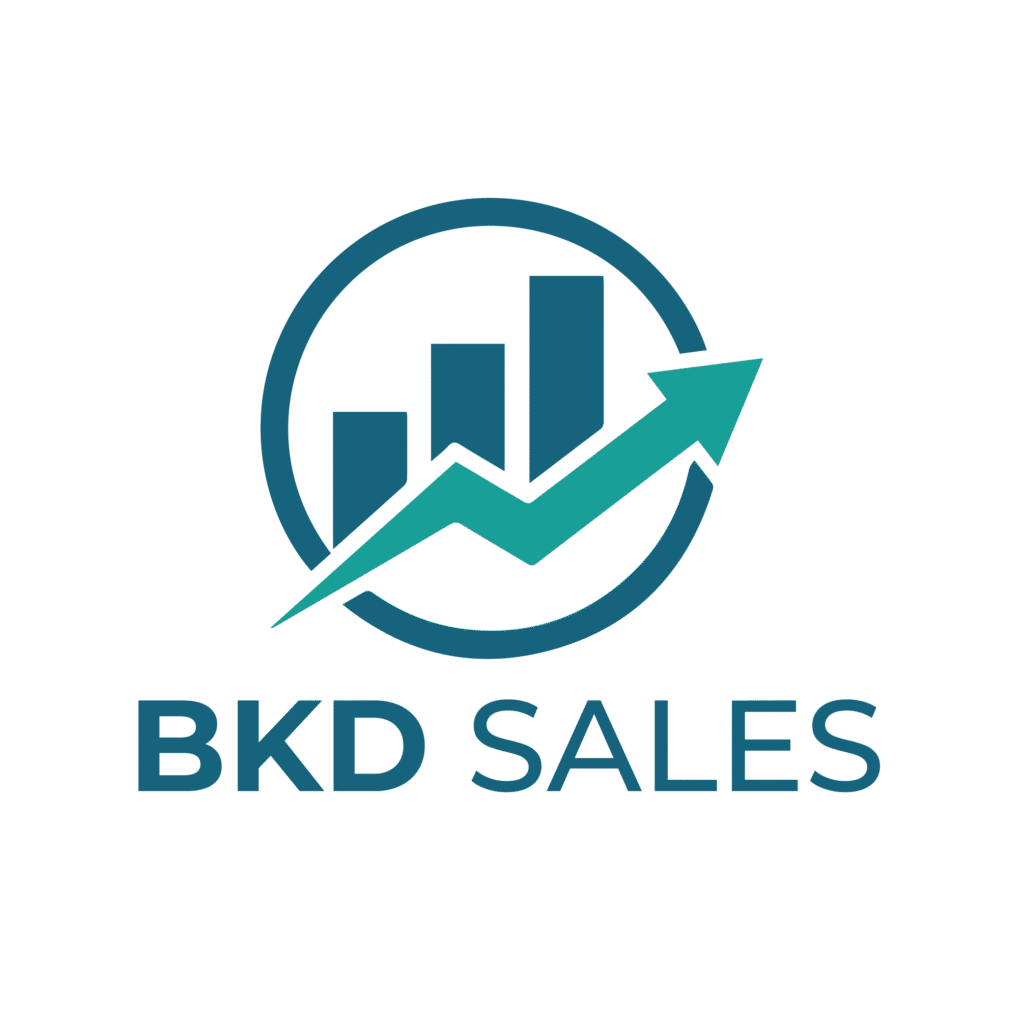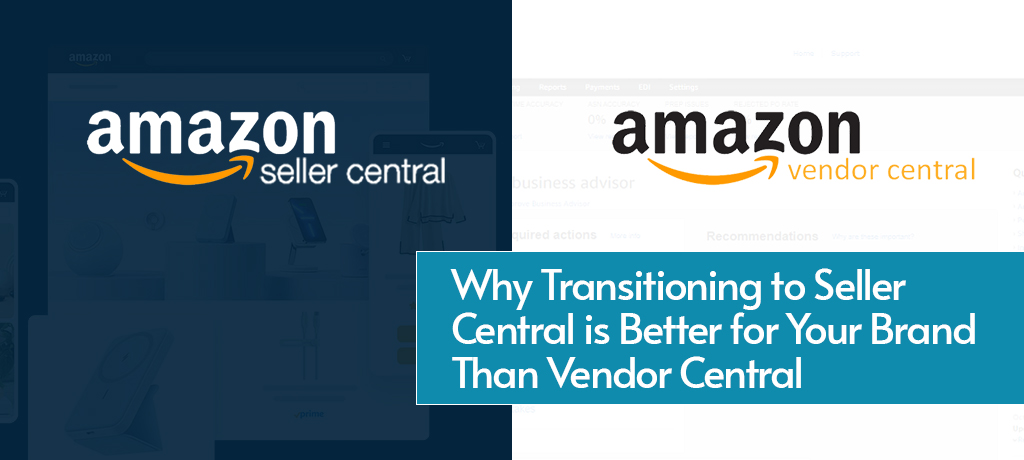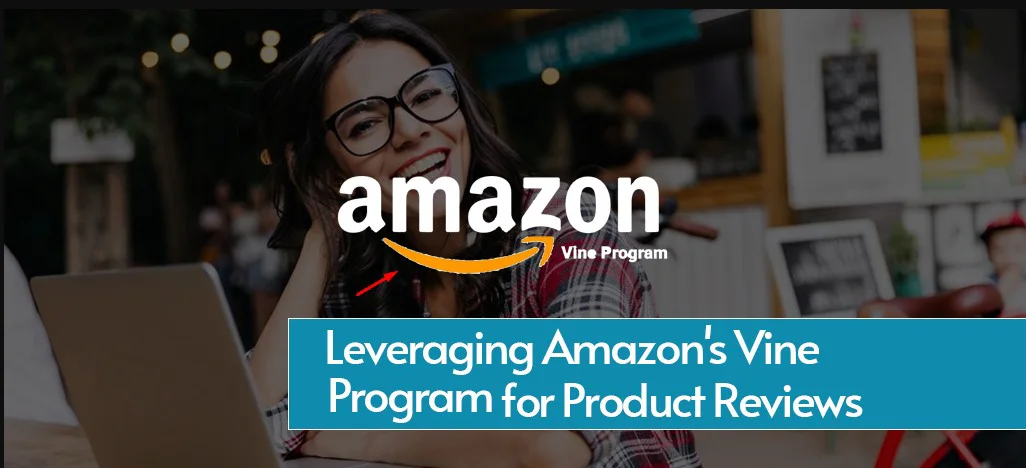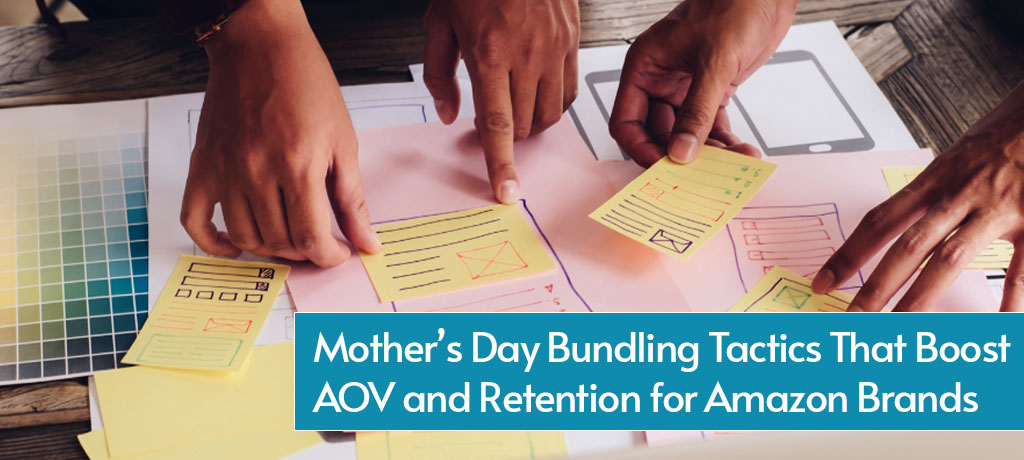Amazon
Why Every Established Brand Needs an Amazon Brand Store (Even If You’re Not Running It Yourself)
Big brands often hesitate to invest in a dedicated Amazon Brand Store. Some feel their product pages do enough. Others think a Brand Store means extra work or more internal resources. But that view leaves growth, and control, on the table.
When you rely on basic listings and scattered content, you give up a clear space to reinforce your brand, guide buyers, and protect pricing.
This is why a Brand Store isn’t just an optional nice-to-have. It’s a strategic asset. And you don’t need to build or manage it yourself to see the upside.
What Happens When You Don’t Claim Your Brand Space
Picture this: a customer searches for your product on Amazon. Instead of seeing a polished, organized collection, they land on a random reseller listing with outdated images. Or worse, a competitor’s Sponsored Brand ad appears first.
Without a Brand Store, you risk:
- Losing visibility in Sponsored Brand placements
- Confusing buyers who see inconsistent messaging
- Eroding premium positioning because listings feel generic
- Driving traffic to resellers who undercut your price
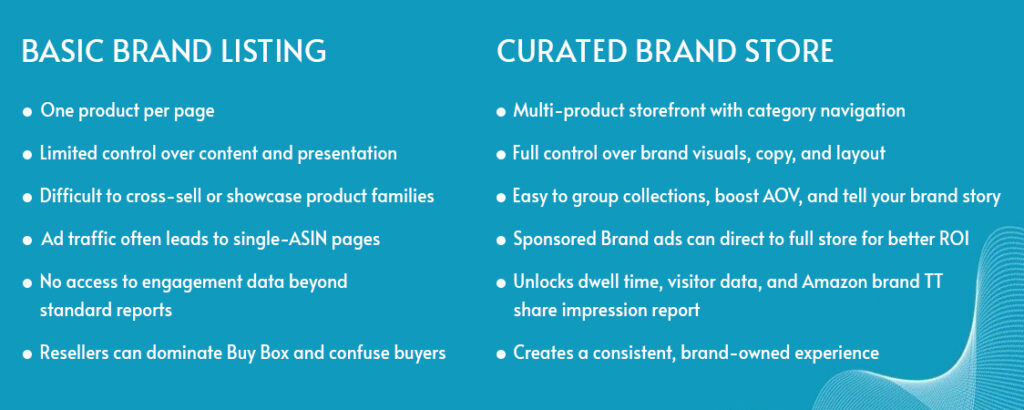
In a channel driven by convenience, these gaps cost real market share.
A Brand Store Is Your Digital Shelf & It Pays Off
A Brand Store functions like a flagship showroom on Amazon. It does more than house your catalog. It:
- Sets the visual and messaging standards others must follow
- Serves as a hub for campaigns and promotions
- Improves conversion by helping buyers browse curated selections
- Builds trust through professional presentation
Brands that run Sponsored Brand campaigns driving to their Brand Store often see lower cost per click and higher return on ad spend. This isn’t theory, it’s proven by Amazon data and consistent client results.
Why Outsourcing Store Management Makes Sense
You might think you’ll need an internal team to create and update your Brand Store. That’s not the case. A managed 3P partner like PRS handles the process end to end:
- Designing a store that matches your guidelines
- Writing copy that supports your brand story
- Refreshing collections seasonally or for new launches
- Monitoring performance metrics like traffic, dwell time, and sales
This approach lets you stay focused on manufacturing, distribution, or DTC growth, without sacrificing your Amazon channel.
How a Brand Store Protects Your Pricing and Reputation
Pricing control matters more than ever. If buyers see inconsistent price points or unclear offers, they question value.
A Brand Store strengthens your pricing integrity by:
- Guiding traffic to a brand-owned destination
- Setting expectations for product quality and presentation
- Reducing the influence of unauthorized sellers
- Providing an authoritative source for product information
When you combine this with Brand Registry and Amazon exclusive selling partner agreements, you lock in stronger control over who can sell your products.
Connecting Campaigns to a Branded Experience
Running Sponsored Brands or DSP ads without a Store is like sending buyers to a dead end. Instead, a Store:
- Lets you feature seasonal collections or promotions
- Supports cross-selling related products
- Helps shoppers explore without leaving your brand’s space
- Retains attention for longer sessions, which boosts algorithmic ranking
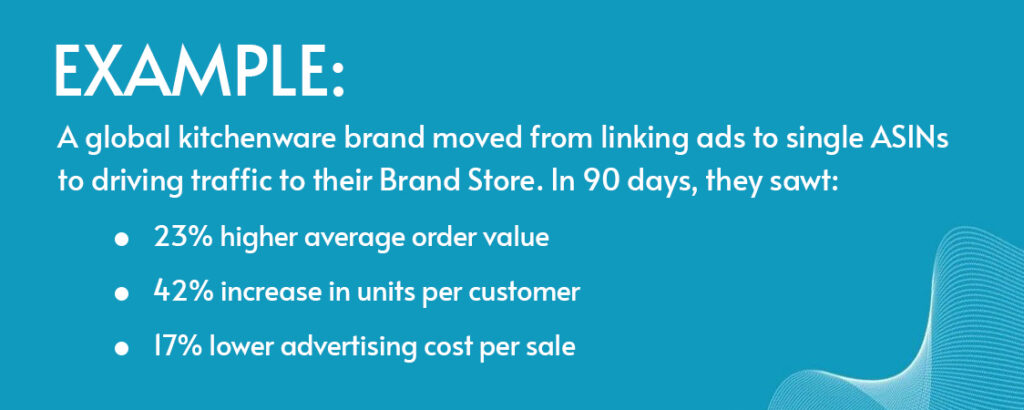
That’s the difference a structured Brand Store can deliver. Below is an example of an optimized Brand Store, where the brand’s full portfolio is organized to guide the shopper experience
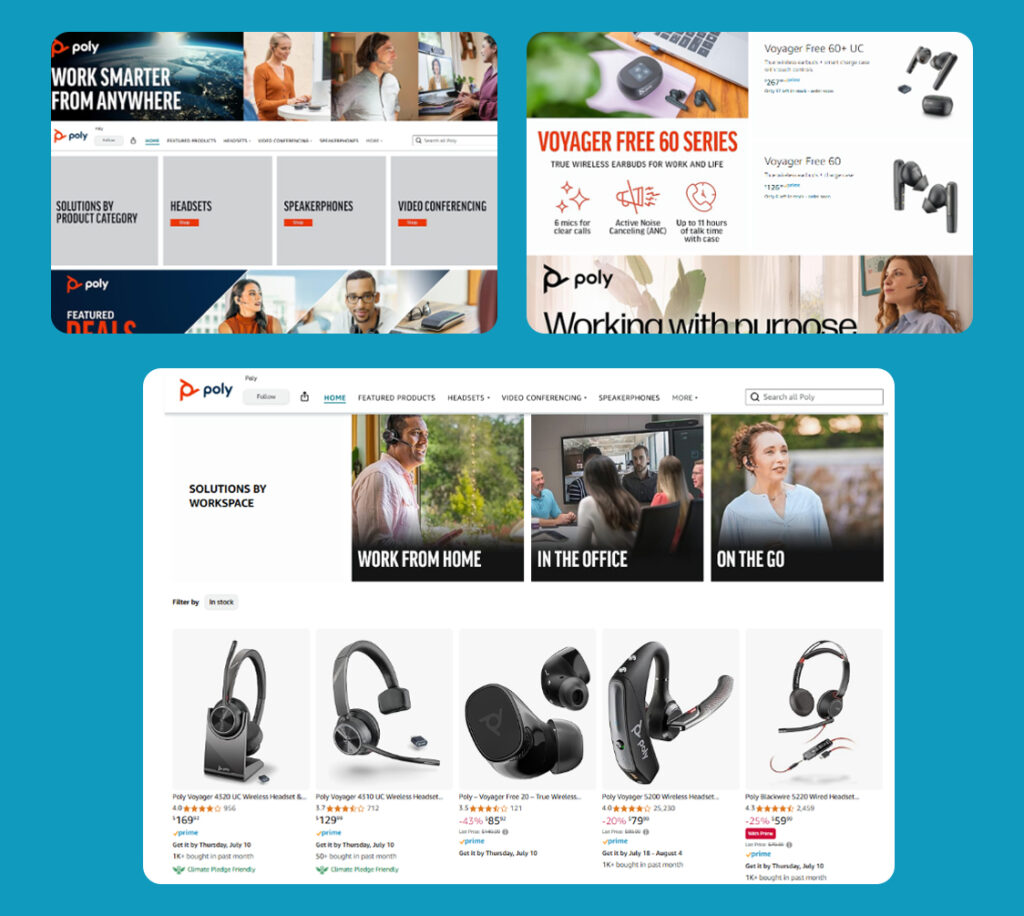
Data and Insights You Won’t Get Anywhere Else
Your Brand Store unlocks reporting unavailable to regular listings. With the Amazon brand share impression report and Brand Analytics dashboards, you can see:
- Visitor counts and engagement
- Conversion trends by subpage
- Keyword performance tied to ad campaigns
- Which product groups drive repeat purchases
These insights fuel smarter decisions about promotions, inventory, and content updates.
Common Mistakes Brands Make & How to Avoid Them
Some brands set up a Store but never update it. Others create generic pages without clear navigation or seasonal relevance.
Here’s what top performers do differently:
- Refresh creative quarterly to align with new product launches
- Use subpages for categories, bestsellers, and new arrivals
- Integrate social proof and lifestyle photography
- Track data monthly and adjust strategy
Quick Checklist for High-Performing Brand Stores
If you already have a Store, use this to spot improvement opportunities:
Is your logo clear and consistent across all pages?
Do your hero banners highlight current promotions or key products?
Are collections organized by shopper intent (e.g., “Gifts,” “Essentials,” “New”)?
Have you refreshed images and copy in the last 3 months?
Are Sponsored Brands campaigns linked to your Store homepage?
Do you monitor dwell time and engagement through Brand Analytics?
Final Takeaway
Your Amazon Brand Store isn’t just a page. It’s a strategic anchor for everything you do on the platform. From advertising to pricing control, it ties together the elements that protect your brand and accelerate growth.
And you don’t have to manage it yourself. PRS serves as your exclusive 3P partner, handling design, optimization, and reporting, so you keep focus where it belongs: on your business.
Ready to see what a fully managed Brand Store can deliver? Let’s connect. PRS can help you build a Store that defends your brand equity, raises conversion, and fuels long-term growth.
Share
